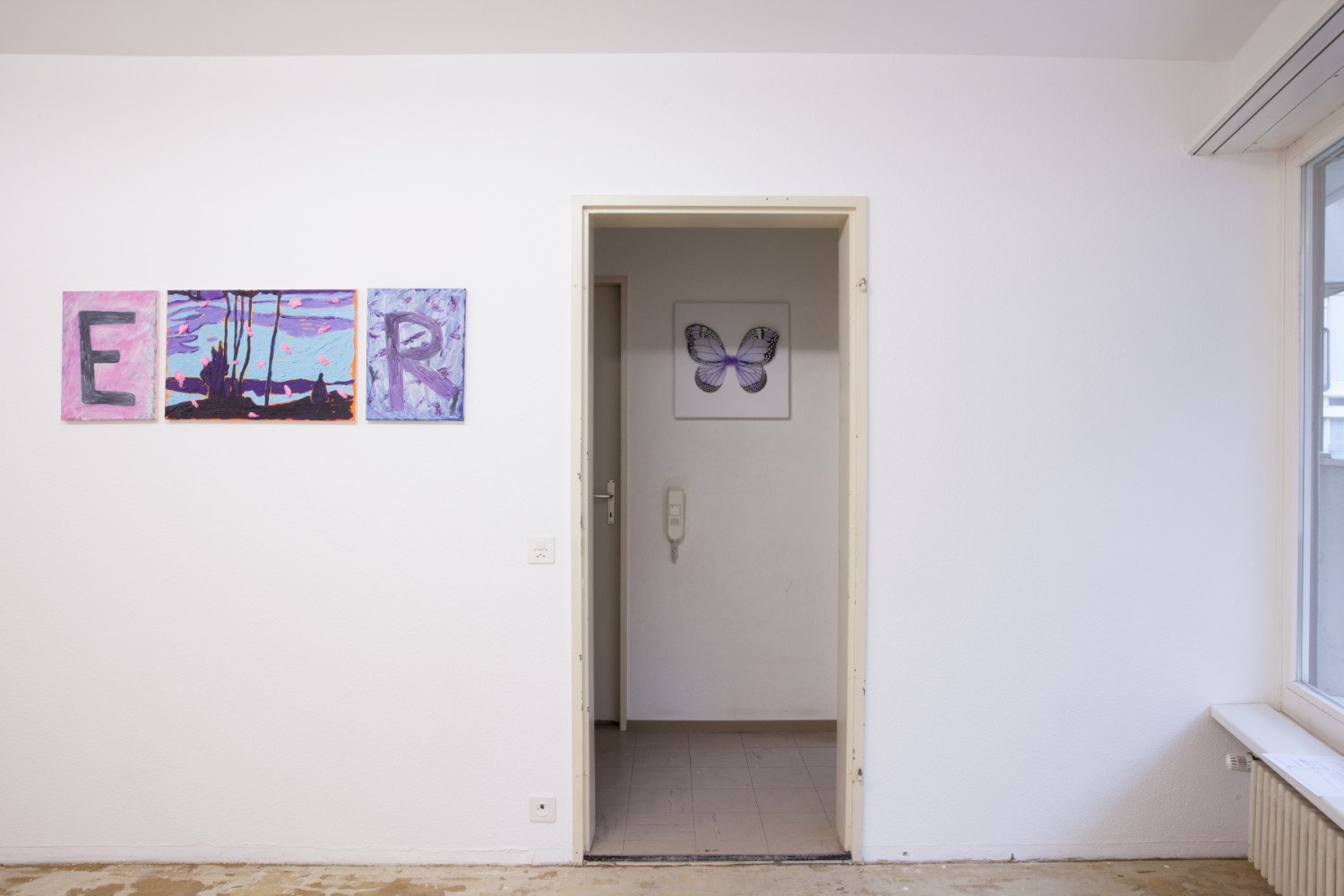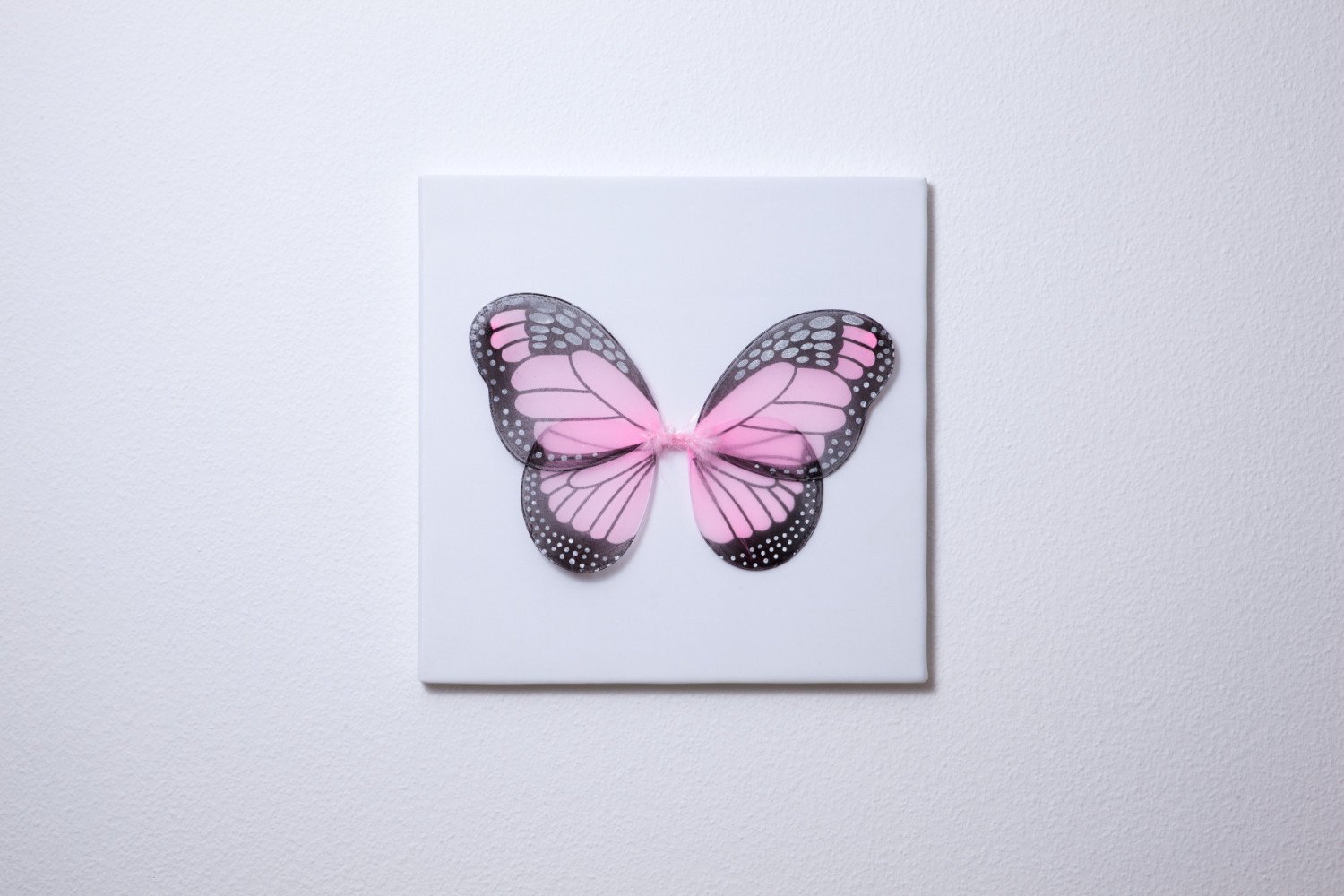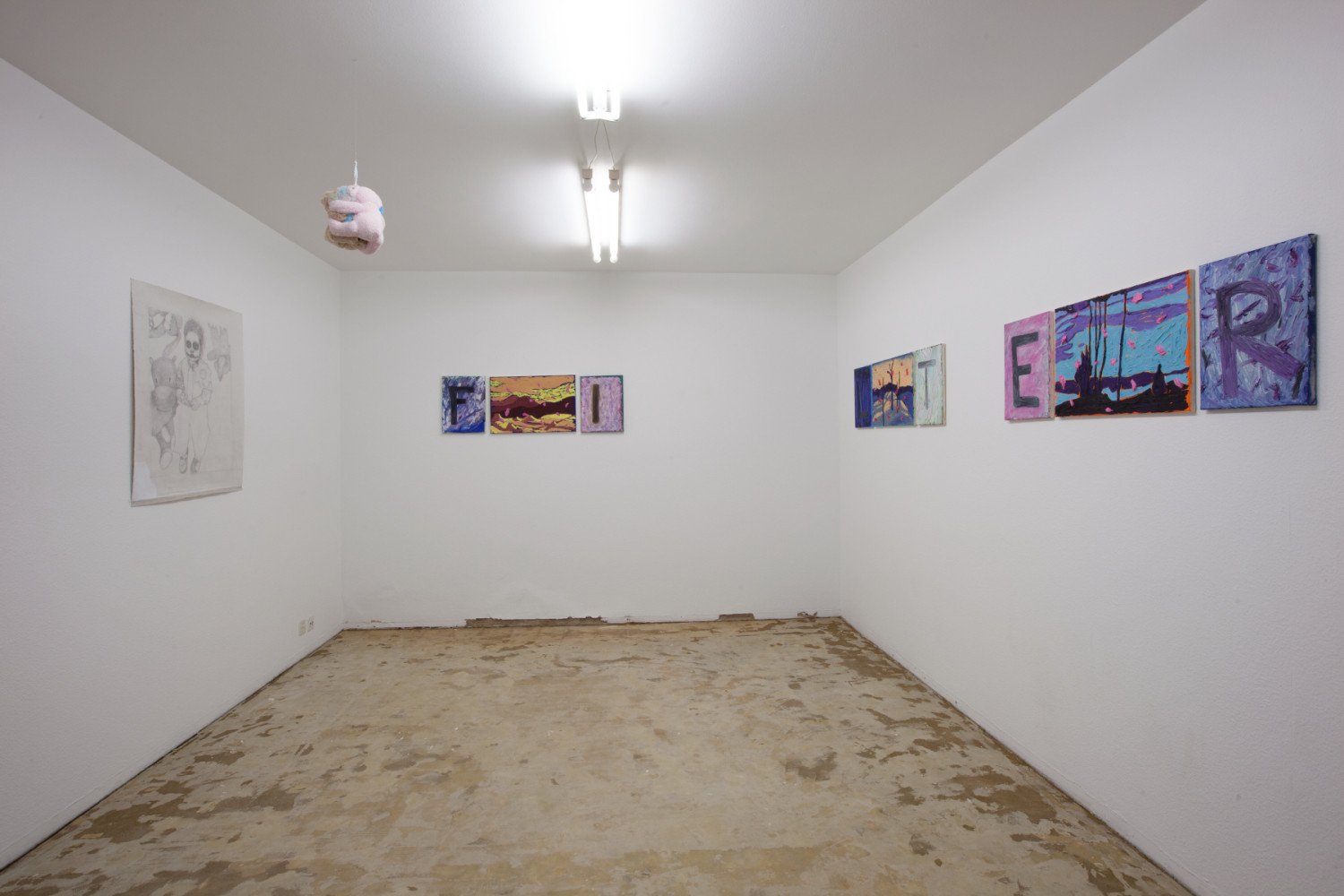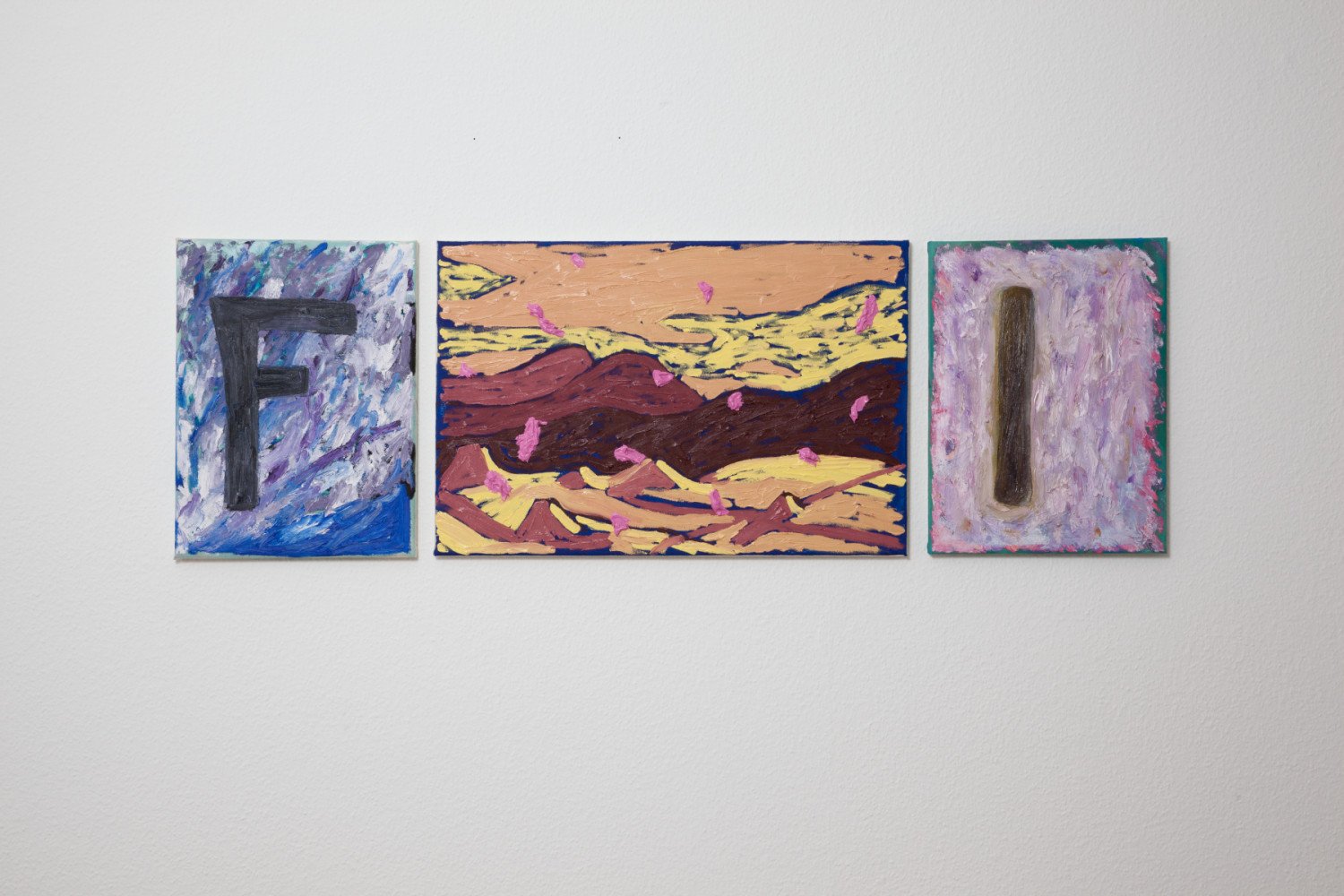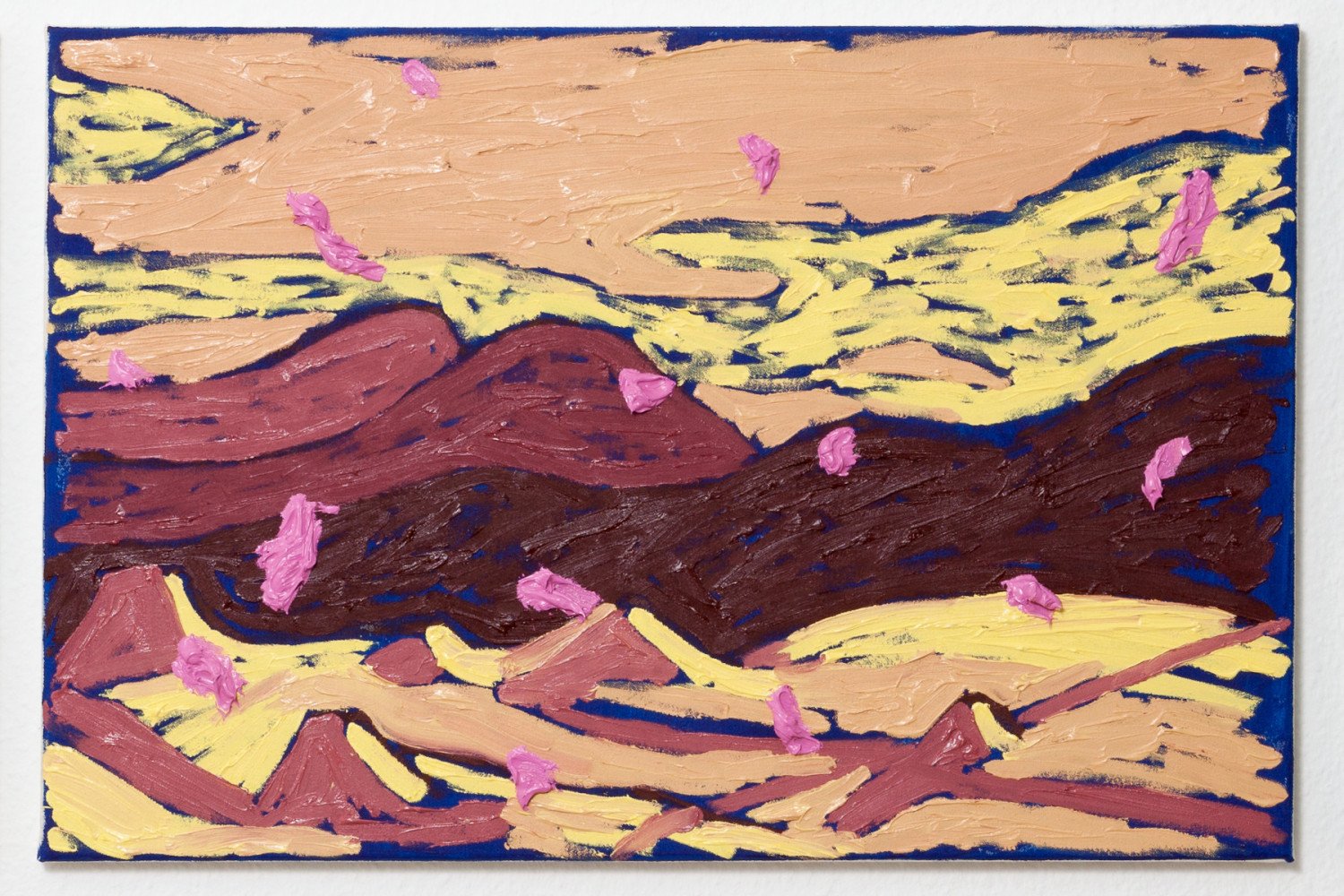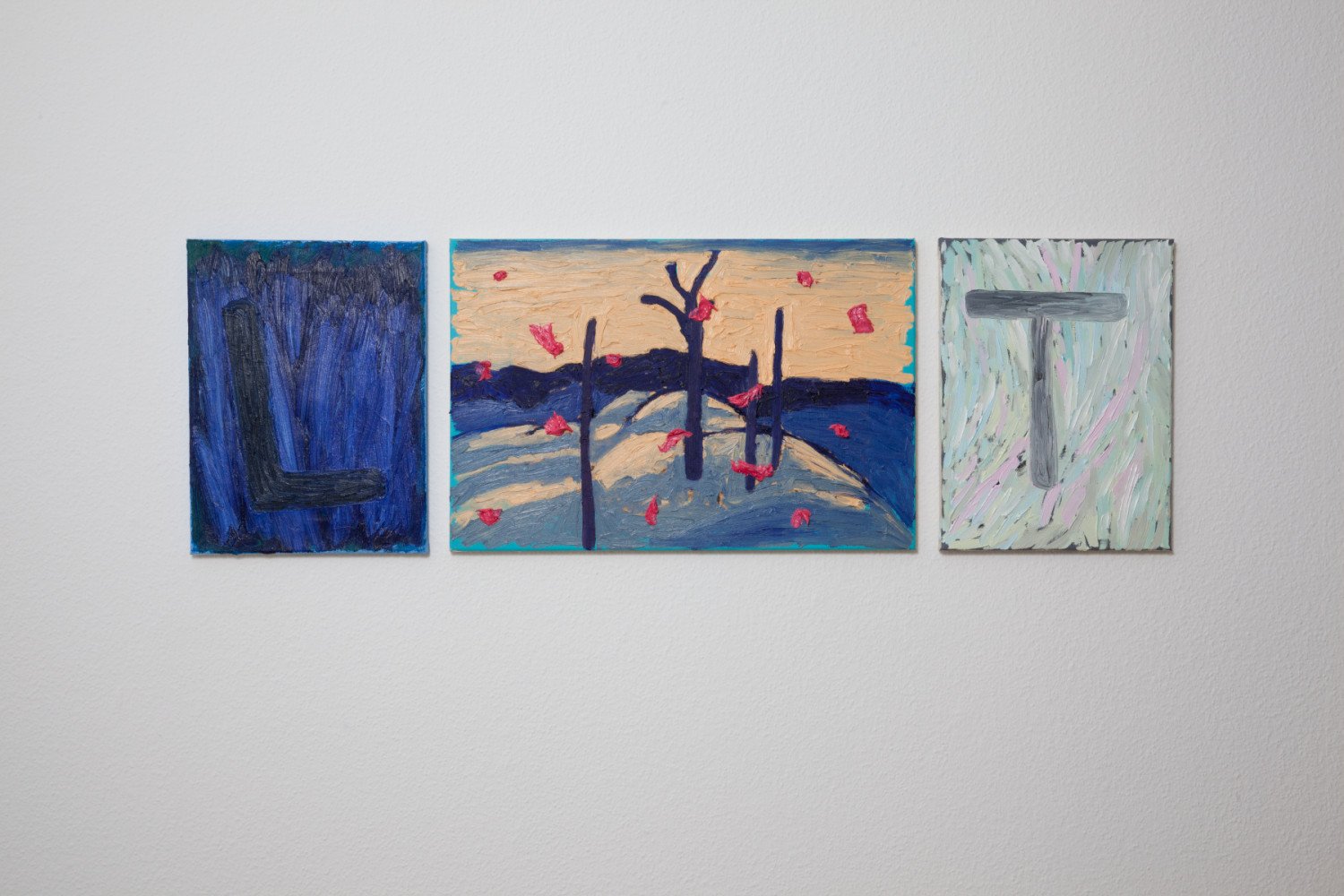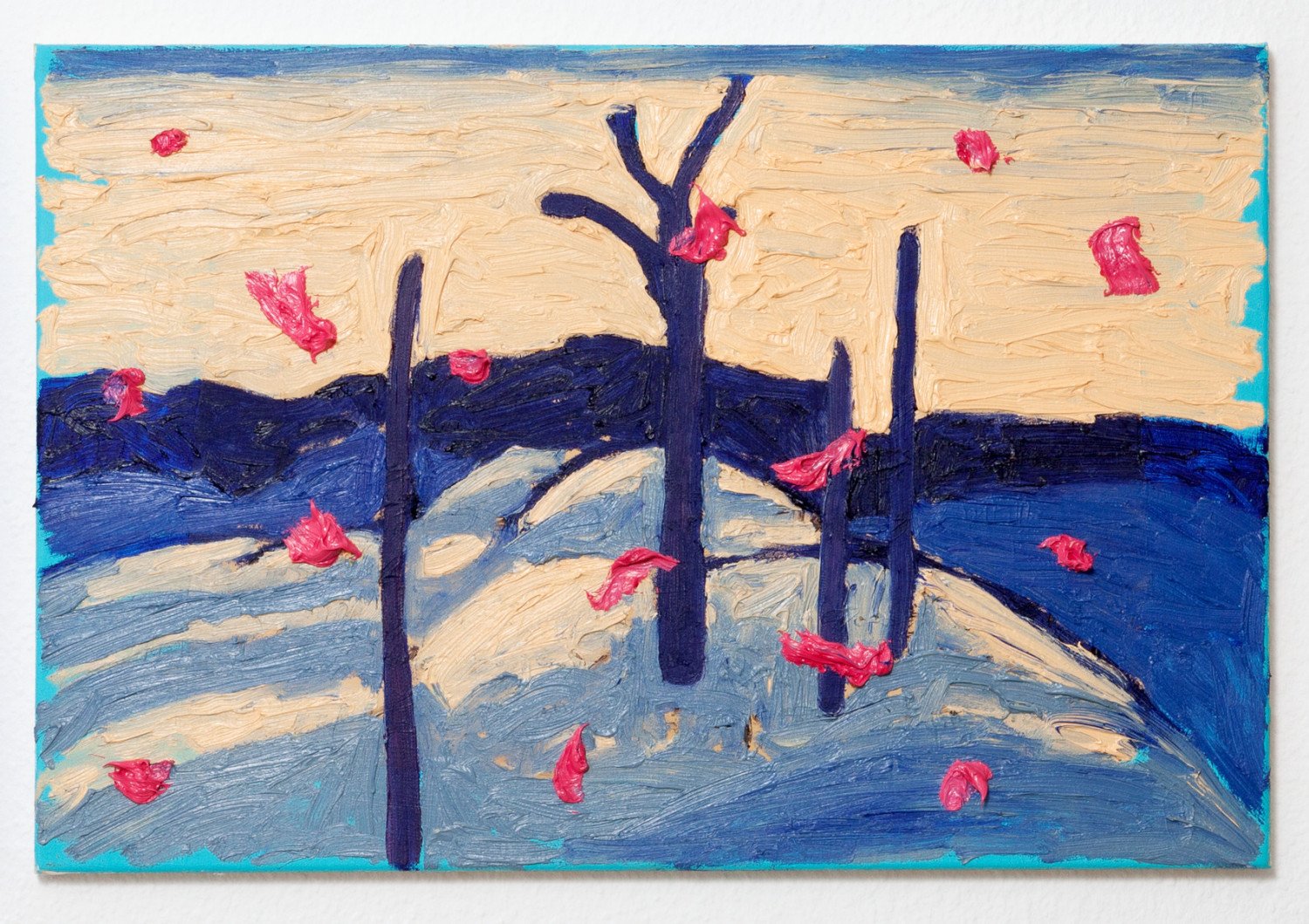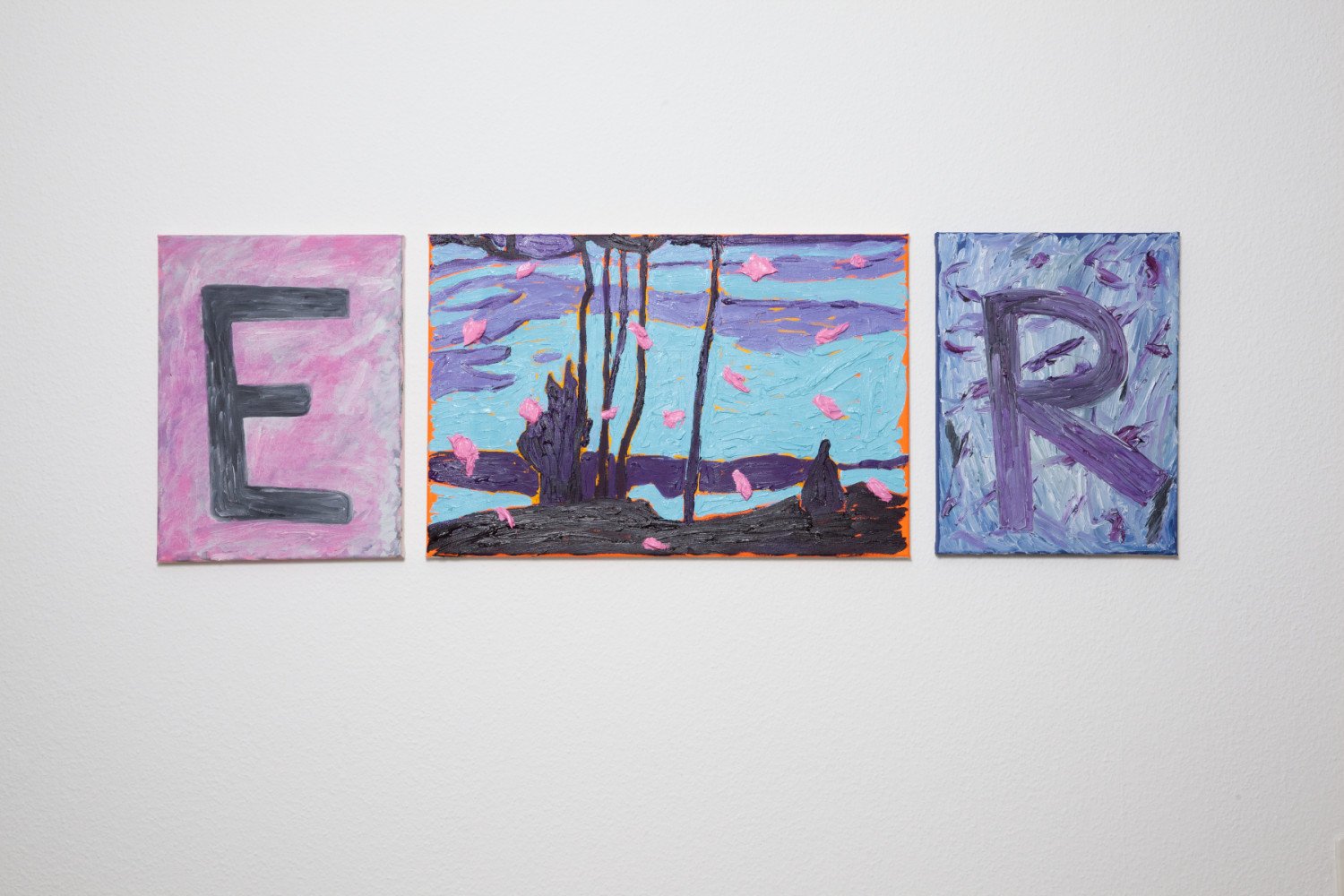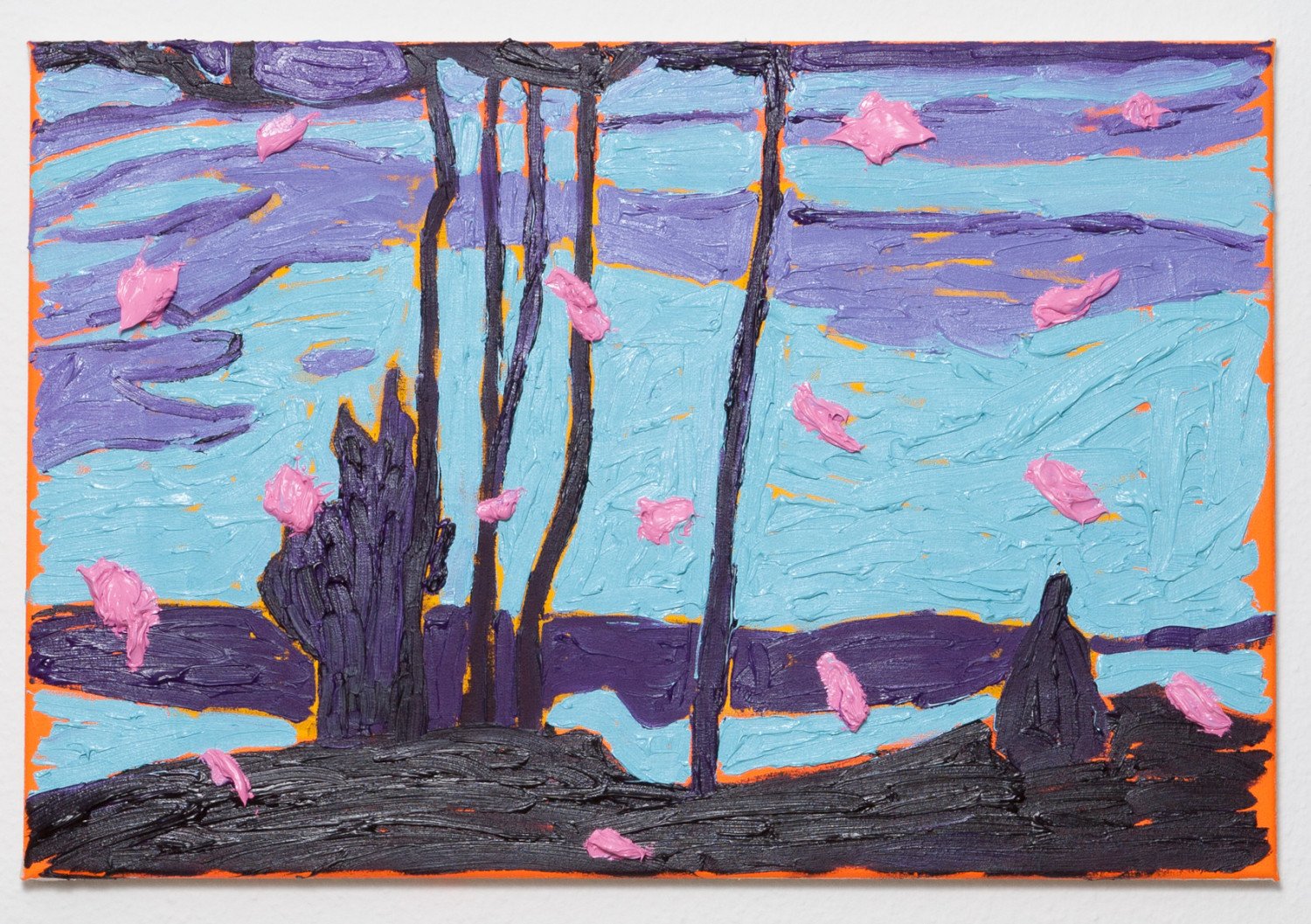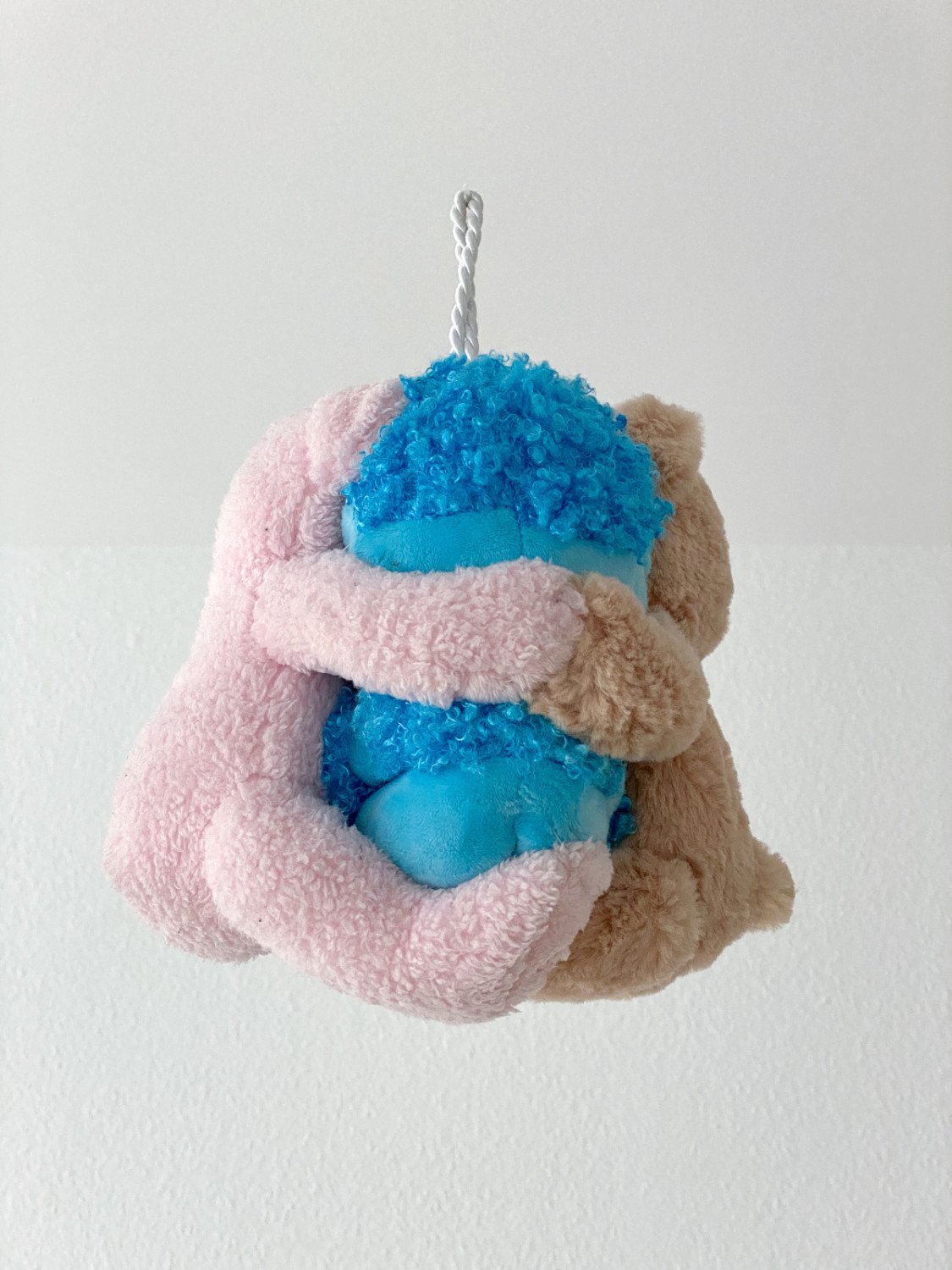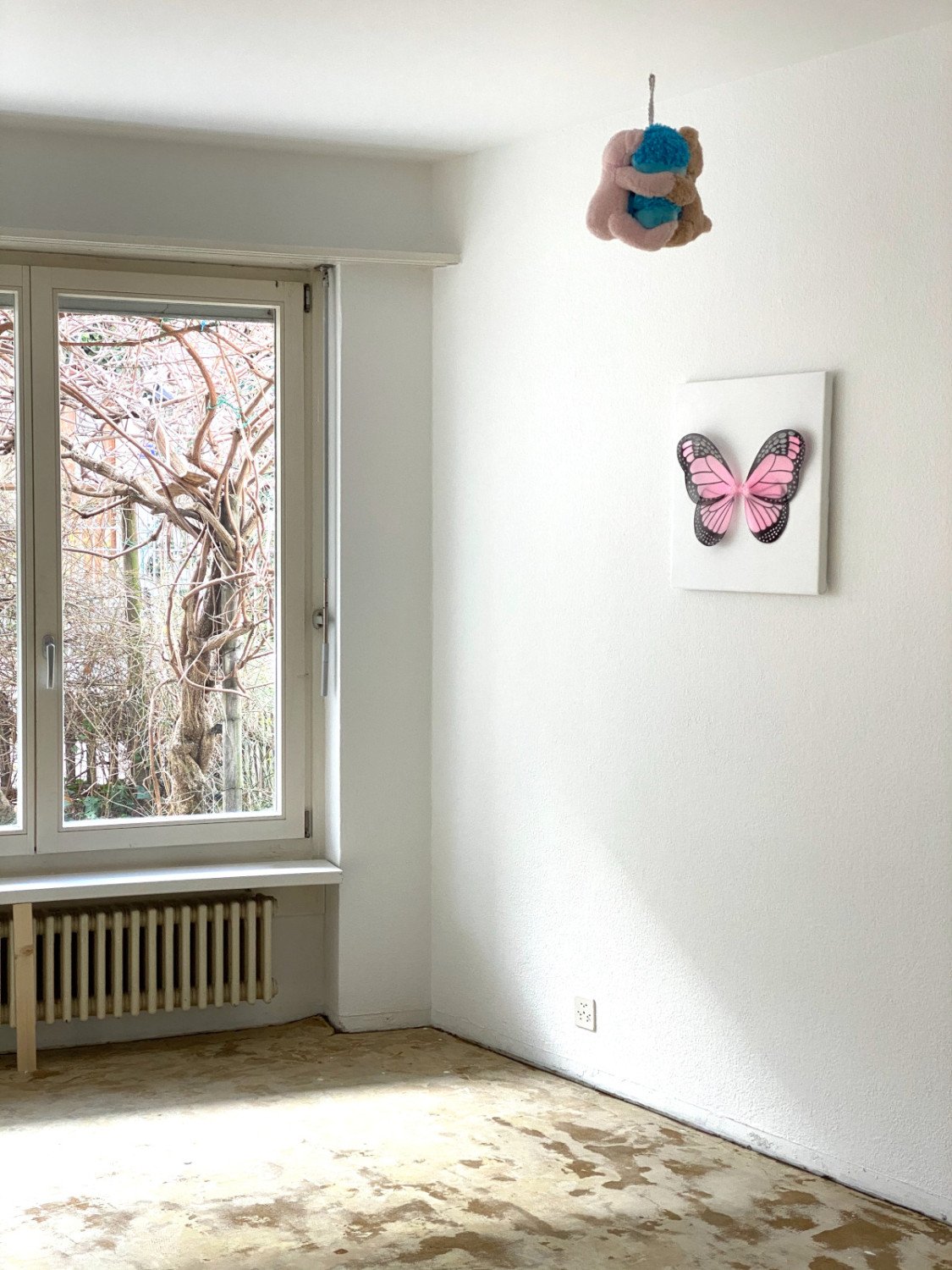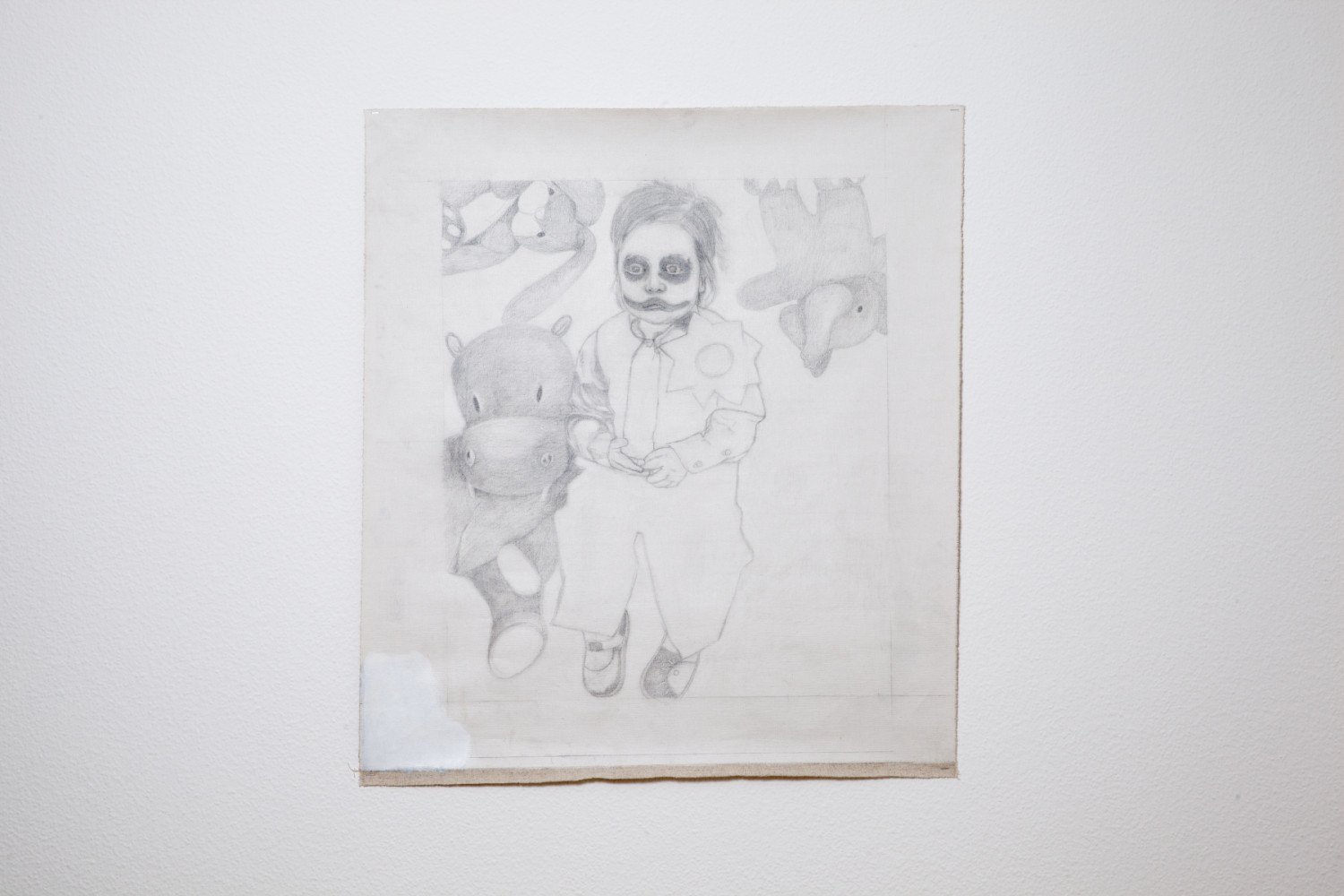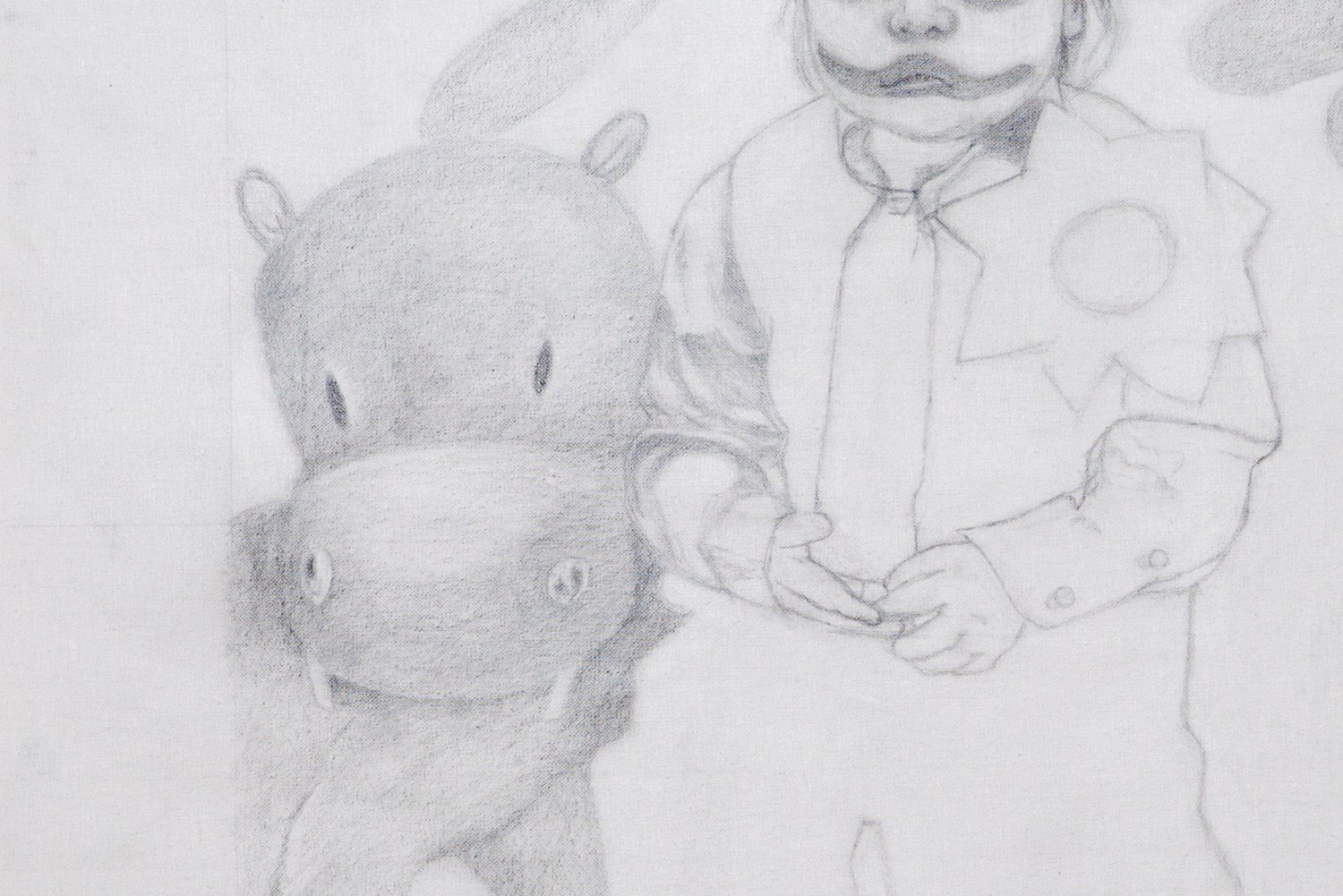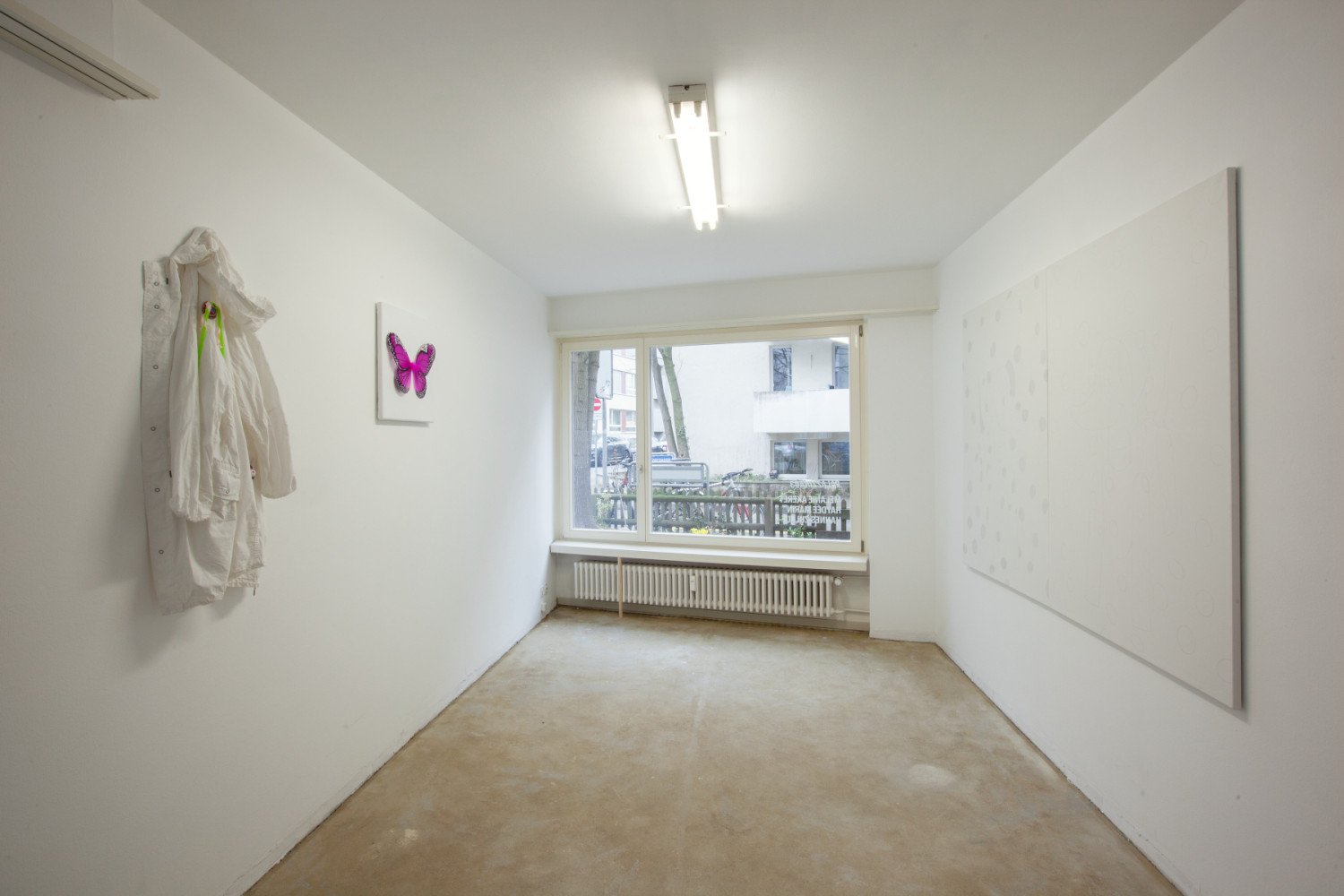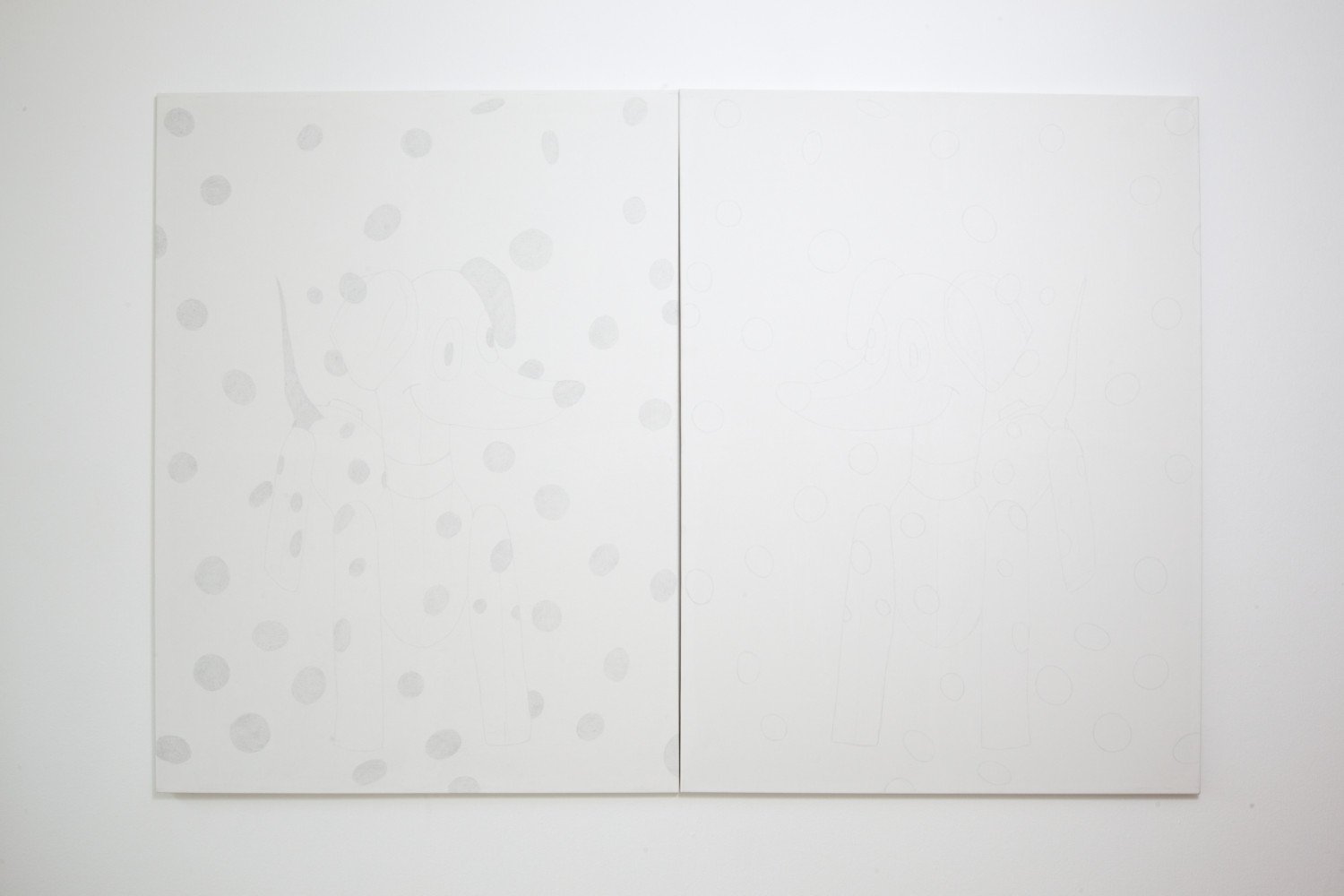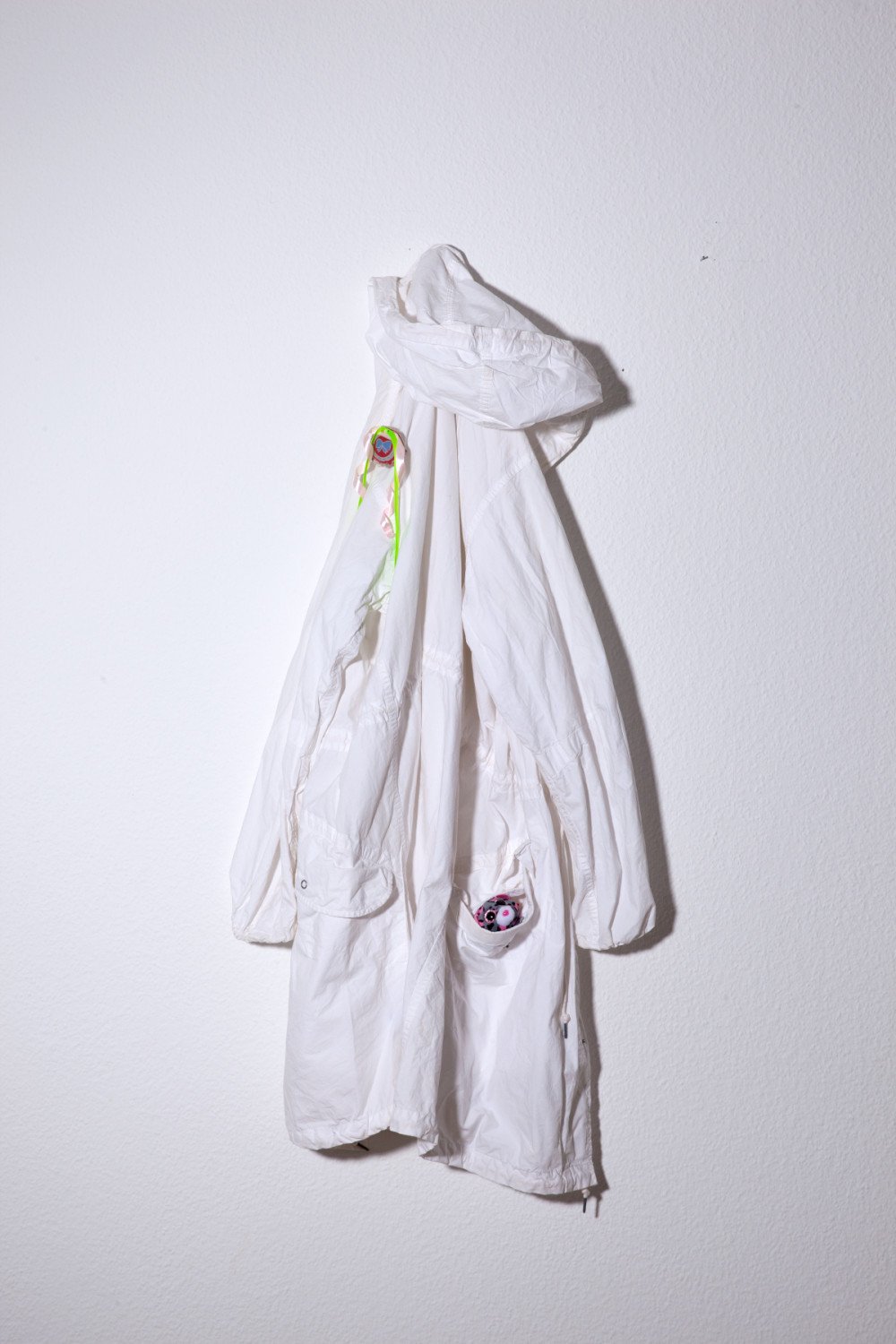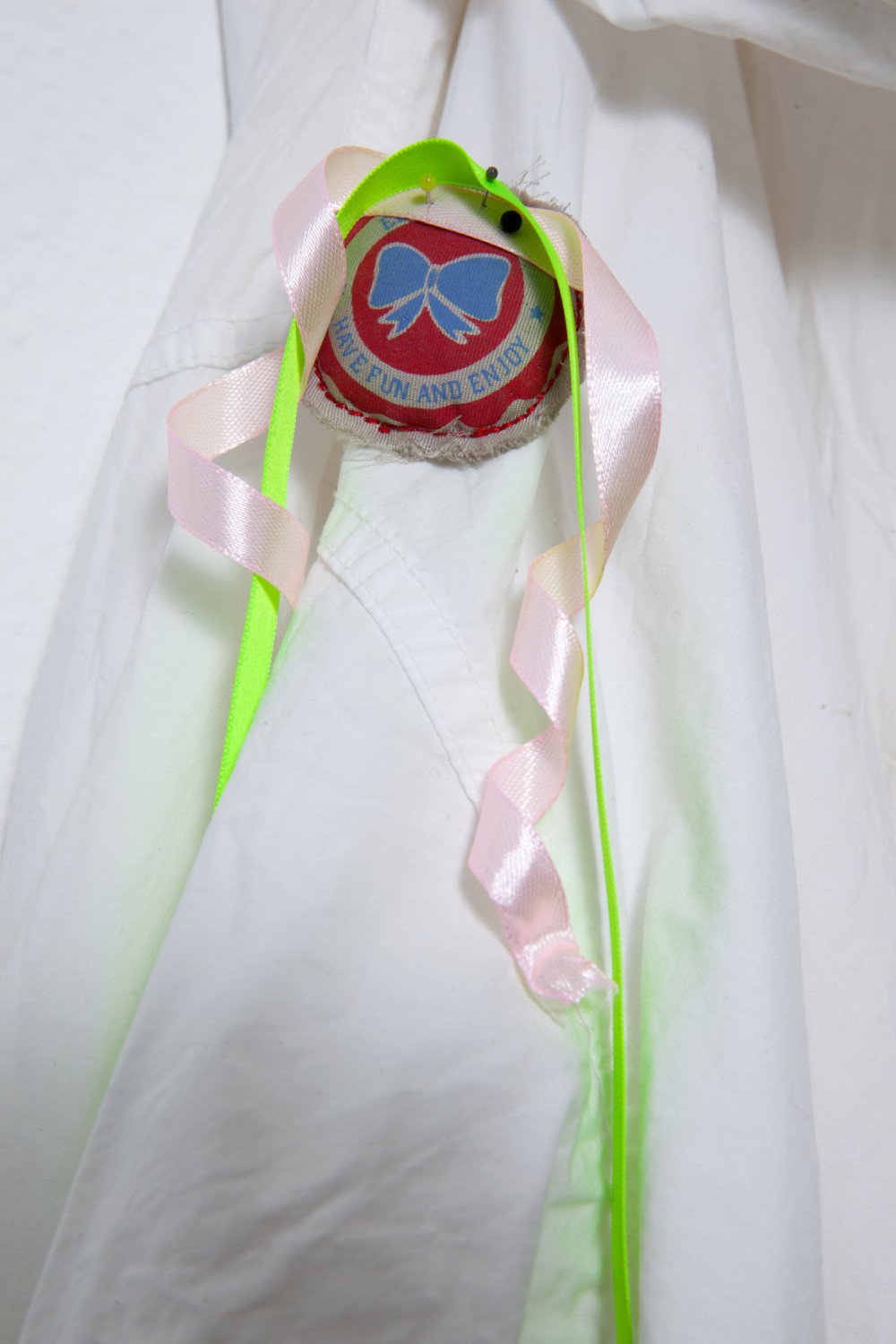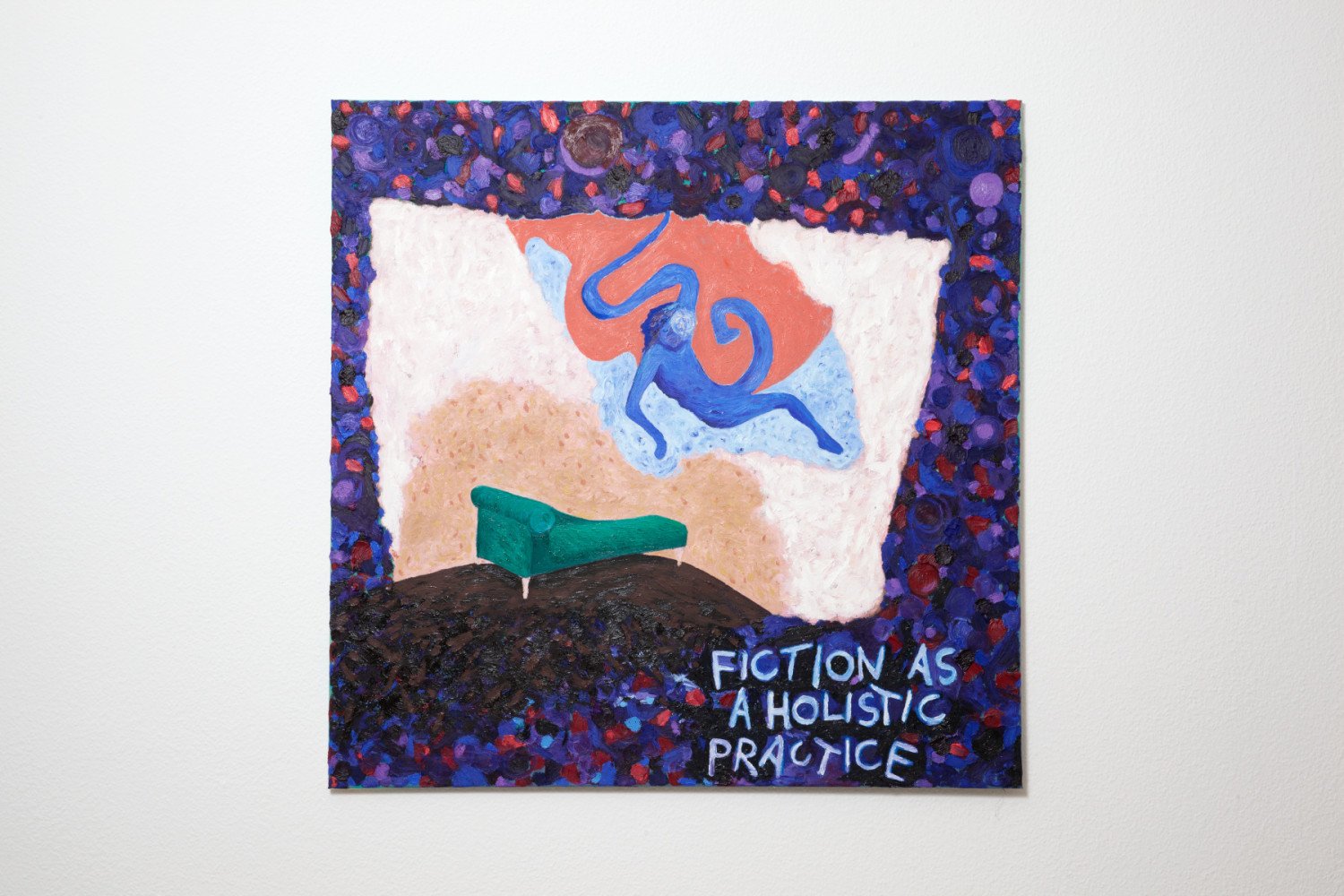Opening: Thu. February 13th, 2020
Palazzina #03 13/02/2020—01/03/2020
Melanie Akeret Haydée Marin Hannes Zulauf
„Filter is the pathos effect, also the encounter in the bar in the evening. Filter is Monet, is Turner. Filter is style in general. [...]“ — Hannes Zulauf (reading, 01.03.2020 at PALAZZINA)
How much do we perceive through filters today? When do we filter and how filtered is painting? In Hannes Zulauf’s work Filter (2020) the letters F - I, L - T and E - R become the frame of landscapes with thick patches of colour. In the form of a triptych, it reminds us of altarpieces, which instead of biblical themes show the genre of landscape, which back in the times was considered a lower genre. It seems as if the landscapes have a filter by famous painters imposed on them. Or are we, as viewers, merely creating a filter through the already known? Ironically, the patches of colour against the background of the landscape become the real protagonists of the triptychs.
Vis-a-vis, an oversized butterfly is fixed on a neoprene canvas. The repeated appearance of Haydée Marin‘s uniformly square and untreated canvases, which through the glued-on fabric butterflies grow into a sort of assemblage, raises questions of uniformity, mass production and trends — also in the field of fashion. For example, Marin‘s „object paintings“ named Papillon de nuit I-III (2020) convey an aesthetic similarity to that of items found in a discounter, produced fast and cheap. This way of production applies to today‘s clothing industry where a current hype about butterfly prints can be observed.
Another seemingly trivial motif can be encountered in Melanie Akeret’s very fragile and reduced two-pieced pencil drawing of a sitting dog surrounded and filled with dots. However, the motif of Punkte-neglecting the decorative element (2020) is rather used as a pretext to justify the means. Viewers are confronted with a sketch which seems to be waiting to be coloured. Against these expectations it provides a stage for this unfinished, anti-heroic character — which also applies to the content.
All three positions discuss values, presence and relevance that contemporary painting claims.
Text by Ines Tondar.
Video documentation of the reading "Filter ist" by Hannes Zulauf
Photos: Palazzina.

